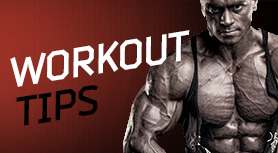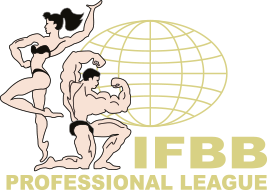ARM MUSCLES
Standing barbell bicep curls: Keep your back straight. Before the active phase breathe in, breathe out during contraction.

Seated dumbell bicep curls: Although it is possible to change hands I prefer to work with both hands at the same time. It's more effective. You can do this exercise also standing, but sitting is safer. When you begin to lose the power, you will not be able to help yourself swinging the body. Start in the position with palms facing each other, turn them up (the hammer stroke) as you contract the biceps. Before you start to run the dumbell down, hold it up for a while.

Standing tricep cable rope extensions: Stand up straight under the extension machine and don't lean back during the excercise. Keep your shoulders fixed and your elbows in the same place next to your upper body. If it is possible, attach the rope or the e-z bar onto the cable.

Seated dumbell tricep extension behind your head: It is important not to move the shoulders. This is a common mistake. Lower the dumbell as low as possible to stretch before you extend (contract) your tricep.

SHOULDERS
Seated rear delt deck: Hold the handles on the lower, horizontal part. Push your shoulders down. Do not put your legs under your seat, or pull them forward. Just sit comfotably and from the knee down keep your legs vertically stable towards to the floor.

Standing dumbell lateral raises: If you do this excercise properly you train middle part of deltoids. Concentrate to have your hands only slightly bent and all the time keep the same angle of the elbows. During the exercise, turn your hands over, you should end the active phase with the pinkeys up and thumbs pointing slightly down. When you end with thumbs up, the exercise will be easier and you will train front part of deltoids. Lift the dumbells up above your eye level.

Pressure with one-handed barbell over your head: You can do this exercise also with the single barbell in front of or behind the head, but one-handed barbells allows a greater range of motion. Beginners shouldn' t be ashamed to use the large barbell. Keep lower part of back always in contact with the bench - don't bend your body! Get the barbells as close as possible to each other. Hold the palms rotated forward, slightly bent your elbows.

BACK
Lat Machine Wide-grip Pulldowns: This movement is very similar to chins, in that it places intense stress on the lats (particularly in terms of width enhancement), rear delts, biceps, brachialis, and forearm flexor muscles. Take an overgrip in the handle with your hands set 7-12 cm wider than your shoulders on each side. Straighten your arms fully and wedge your knees under the restraint bar provided. Arching your back and being sure to keep your elbows back during the movement, slowly pull the bar down to touch the upper part of your chest. Slowly return the bar to the starting point and repeat the movement for the desired number of repetitions.
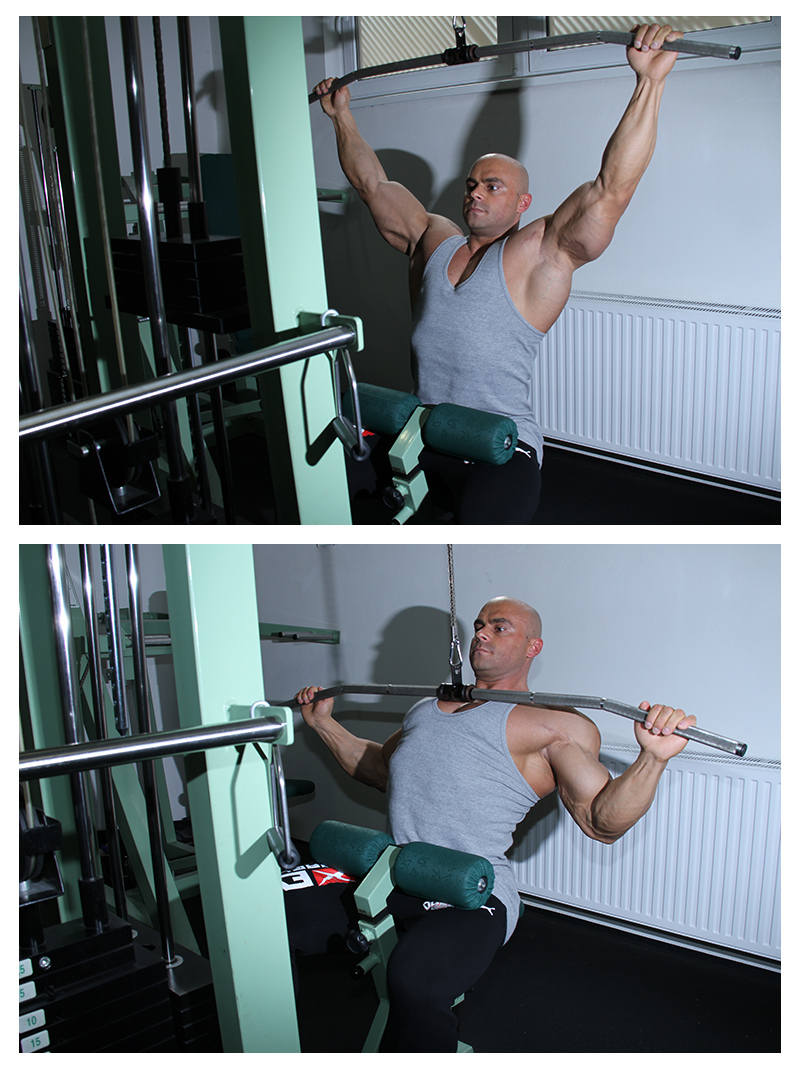
Barbell Bent-over Rows: This exercise places major stress on the lats, traps, posterior, deltoids, biceps, brachialis, and forearm flexor muscles. Secondary stress is born by the remaining back muscles. Take a shoulder-width overgrip on a barbell, set your feet about shoulder width apart, bend your legs slightly, keep your arms straight, and arch your back up sufficiently to raise the barbell just clean off the floor. Keeping your elbows back, slowly pull the barbell from straight arms´ length directly upward to touch your lower ribcage. Reverse the movement to slowly return the barbell to the starting position. Repeat the movement for the suggested number of repetitions.
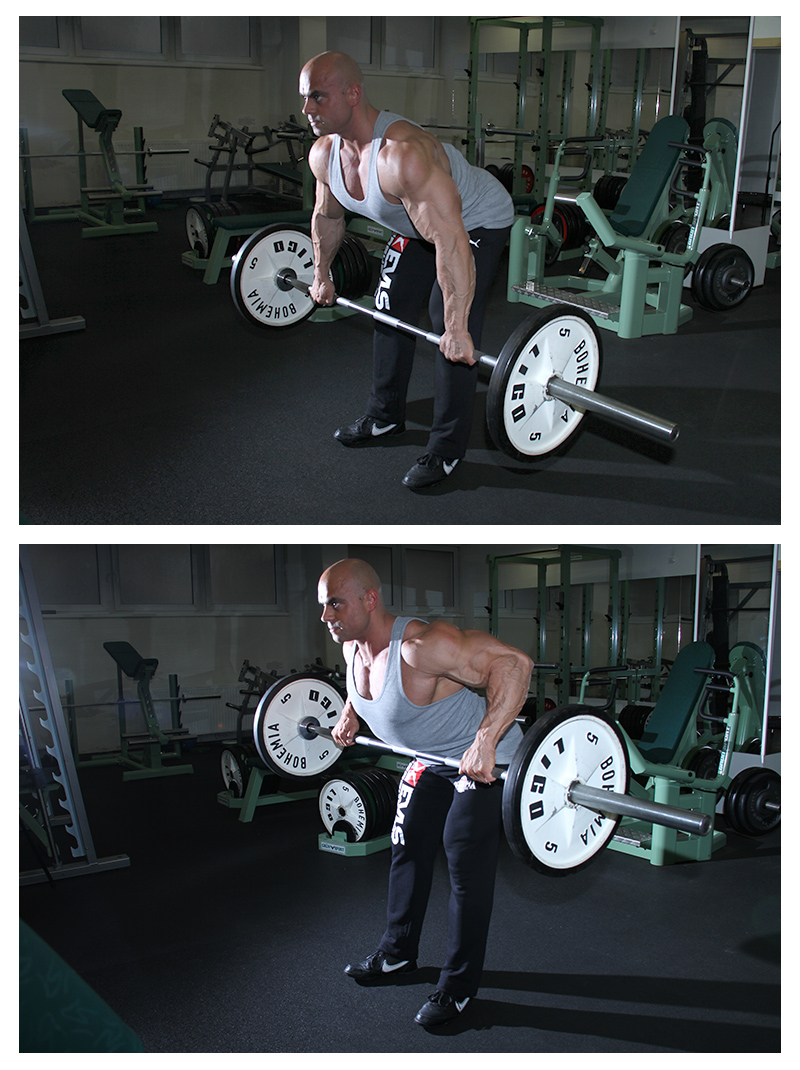
Hyperextensions: This exercise places direct stress on the hamstrings, glutes, and spinal erectors. Minimal secondary stress is placed on the other back muscles. Stand in the middle of a hyperextension bench facing the large pad. Lean forward and place your hips on the pad, allowing your heels to come to rest beneath the smaller pads behind you. Keep your legs straight for the entire set. Place your hands behind your head and neck. Allow your torso to hang directly downward from your hips. Use back, glute, and hamstrings strenght to raise your torso upward in a sort of reverse sit-up, until your torso is above an imaginary line parallel with the floor. Return slowly to the starting point and repeat.
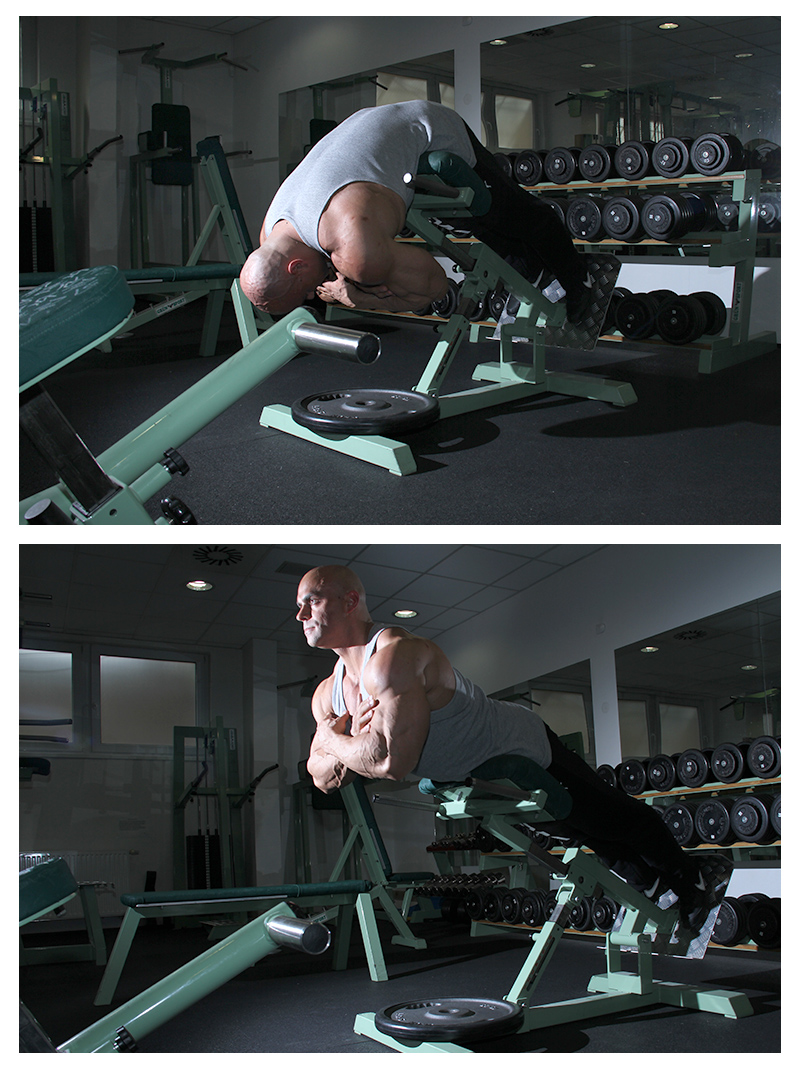
In collaboration with Men's Life magazine.
